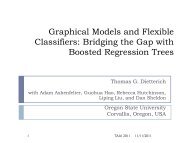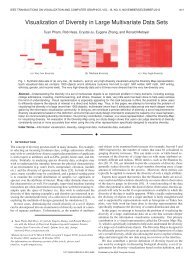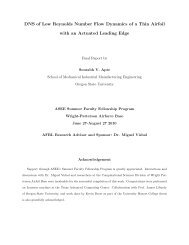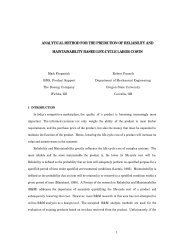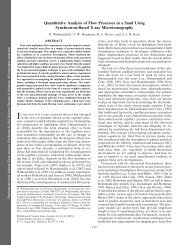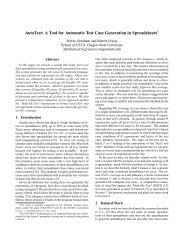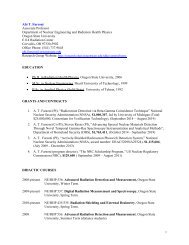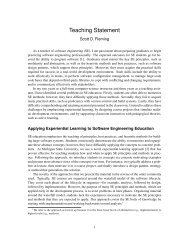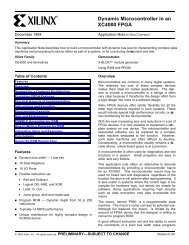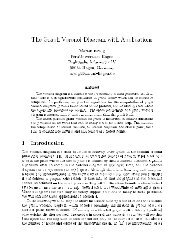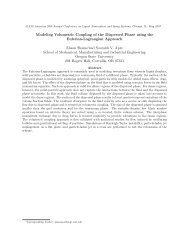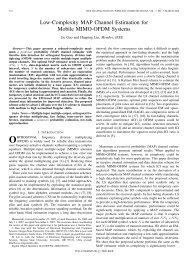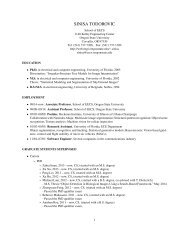Large-eddy Simulation of Realistic Gas Turbine Combustors
Large-eddy Simulation of Realistic Gas Turbine Combustors
Large-eddy Simulation of Realistic Gas Turbine Combustors
You also want an ePaper? Increase the reach of your titles
YUMPU automatically turns print PDFs into web optimized ePapers that Google loves.
where the breakup frequency (ν) and time (t) are introduced. Here, T (x, t) is the distribution<br />
function for x = log(r p ), and r p is the droplet radius. Breakup occurs when t > t breakup = 1/ν.<br />
This distribution function follows a certain long-time behavior, which is characterized by the<br />
dominant mechanism <strong>of</strong> breakup. The value <strong>of</strong> the breakup frequency and the critical radius<br />
<strong>of</strong> breakup are obtained by the balance between the aerodynamic and surface tension forces.<br />
The secondary droplets are sampled from the analytical solution <strong>of</strong> Eq. (15) corresponding to<br />
the breakup time-scale. The parameters encountered in the FP equation (〈ξ〉 and 〈 ξ 2〉 ) are<br />
computed by relating them to the local Weber number for the parent drop, thereby accounting<br />
for the capillary forces and turbulent properties [10]. As new droplets are formed, parent droplets<br />
are destroyed and Lagrangian tracking in the physical space is continued till further breakup<br />
events.<br />
2.4.3 Evaporation model<br />
Typical spray simulations do not resolve the temperature and species gradients around each<br />
droplet to compute the rate <strong>of</strong> evaporation. Instead, evaporation rates are estimated based on<br />
quasi-steady analysis <strong>of</strong> a single isolated drop in a quiescent environment [18, 19]. Multiplicative<br />
factors are then applied to consider the convective and internal circulation effects. We model<br />
the droplet evaporation based on a ‘uniform-state’ model. The Lagrangian equations governing<br />
particle mass and heat transfer processes are well summarized by Oefelein [20] and are described<br />
here in brief.<br />
d<br />
dt (m p) = −ṁ p (16)<br />
m p C pl<br />
d<br />
dt (T p) = h p πd 2 p (T g − T p ) − ṁ p ∆h v (17)<br />
where ∆h v is the latent heat <strong>of</strong> vaporization, m p mass <strong>of</strong> the droplet, T p temperature <strong>of</strong> the<br />
droplet, and C pl the specific heat <strong>of</strong> liquid. The diameter <strong>of</strong> the droplet is obtained from its<br />
10



